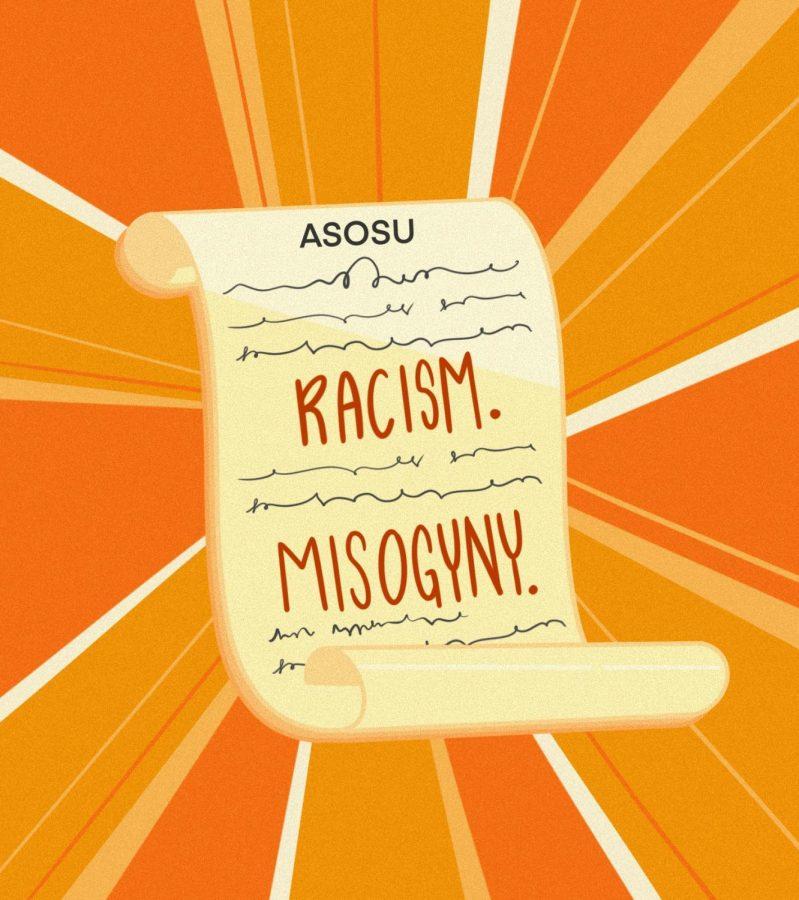Kaske: ASOSU is a racist, sexist organization with little hope to change
April 1, 2021
Editor’s Note: This column does not represent the opinion of The Daily Barometer. This column reflects the personal opinions of the writer.
Sienna Kaske was involved in and assisted with Isabel Nuñez Pérez and Metzin Rodriguez’s presidential campaign as their campaign manager in January and February of 2020.
A generational look from alumna women of color into the systemic racism and sexism that upholds the foundation of the Associated Students of Oregon State University.
A committee to investigate the leadership of the Associated Students of Oregon State University’s President Isabel Nuñez Pérez and Vice-President Metzin Rodriguez has been formed by the House of Representatives to seek accountability. Accountability for what? And for who? Because they’ve said it’s for the students, but it sounds like a power trip for a couple of students who are eager and quick to interrogate women of color leadership without evidence to back their claims.
It’s hard to imagine that House Bill 12.02, which authorized the Executive Conduct and Accountability Committee, is doing what Oregon State students need right now. Amidst a pandemic, a university presidential scandal and a whistleblower lawsuit for racial and sexual harassment, this is what those who authored, sponsored and voted for this bill decided to do with their time and student fee-funded pay? The committee itself is fishy, as Nat Young, a woman of color who was on the ECAC, just stepped down from her senator position and quit ASOSU due to her experiences in the organization.
“I quit the committee and ASOSU, the larger reason being there were big changes in my life that made my timeline for school a lot different than I thought so I can’t commit. But the other thing is, it’s not an efficient use of my time. It would be one thing if all of the work I’m doing for ASOSU was actually changing the lives of students and making my community better and safer. But I’m using up so many hours of my week, I’m not getting paid because I’m an international student, and the majority of what we do is stuff that has no impact on students. This committee is a witch hunt that’s ultimately going to amount to nothing at best, and at worst it disincentivizes women of color from running for the position again, knowing that they’ll be overworked, undermined and ultimately put on trial for their efforts,” Young said.
Young also mentioned that she had been working for months on implementing a safe walk program that is associated with Safe Ride and recently found out that a safe walk resolution passed two years ago, yet congress did nothing about it. Congress passes resolutions but doesn’t follow through with their advocacy.
“ASOSU has become just about internal policy, and I think part of the reason is because over the years ASOSU moved more and more towards helping clubs with events and hosting events, but now that it’s a pandemic, the cracks are coming out that beyond events they’re not really mobilized to enact change. And this is saying no ill on Isa and Metzin because they ALWAYS show up. Isa testifies at every board of trustees [meeting], Metzin has helped me every time I’ve asked her for advocacy and for connections to the Faculty Senate. It’s absurd that members of ASOSU can villainize them while doing so little to fulfill their own roles. Isa is so busy, and yet I’ve rarely had to reach out to her. She has reached out to me, provided me opportunities for advocacy, set up meetings so that we can get work done and make connections. She goes above and beyond,” Young said.
The student population at Oregon State—quite honestly—is unaware of what ASOSU is and what they do, yet women of color who have come across this student organization know all too well how toxic ASOSU is. The accountability that we actually need is for the organization to take accountability for the systemic racism and sexism that has negatively affected generations of women of color.
As an entity, ASOSU has woven racism and misogyny into the fabric of its constitution; allowing elected student leaders to use their power to tear women of color’s reputations and their power down—and for what? To do what’s best for OSU students? What’s happening with Nuñez Pérez and Rodriguez is yet another moment in ASOSU history that adds to the legacy of racism and sexism because the ECAC is literally searching for evidence to take punitive measures against two women of color. If they were two white men or women, congress would have had a conversation with them. But because they are two women of color, they are seen as bitchy and scary because of the passive-aggressive white liberalism that plagues Oregon and fears women of color in leadership. Congress went behind Nuñez Pérez’s and Rodriguez’s back and formed a committee to investigate before even talking to them about leadership concerns.
I have been involved with ASOSU for three years now and have witnessed and experienced the disrespect and power hierarchy that people in this organization throw over women of color. For instance, where was the committee to investigate the leadership of past presidents who weren’t doing their presidential duties? Or when a past director of Diversity Affairs was pushed out of the organization due to the racism and sexism they were receiving from a separate OSU department? Or when a literal white supremacist was in office? It’s simple—the sitting presidents at that time were white men.
This pattern of systemic racism and sexism in ASOSU is not surprising given that the entire organization is based on the United States government. While mansplaining and racial micro-aggressions run freely in the ASOSU office, it is not women of color’s job to “fix” this issue and it is not up to the oppressor to say what is and what is not sexist and racist.
I cannot speak for all women of color, but I know that many of us who have come across this organization leave with disdain and have had sour experiences that stay with us for years. I too have my own stories that will take awhile to heal from, and once I graduate, I’ll be most grateful to never deal with ASOSU again. When women of color advocate for ourselves in spaces that were never designed for us, people don’t believe our claims of discrimination because, in Oregon liberal spaces, racism is rarely explicit. The covert and polite racism that ASOSU is superb at has been brewing over decades. It’s in the way that nearly every person, regardless of race, is participating in white supremacy culture.
When women of color say that we are experiencing different treatment than our white counterparts we are told that we are lying, we are invalidated and gaslighted. It is only when we share our stories in unison that we hope people will believe us and that the community will take a closer look at what is happening within ASOSU.
I connected with Raven Waldron who was one of the very few women of color in ASOSU in 2018. I first met her during a time when I spoke out at a Student Fee Committee meeting because a white male committee member incessantly spoke over other women of color. Waldron and I didn’t share any words but we both looked at each other, sharing a moment of solidarity. “I got you,” I said telepathically. I think she received it.
Waldron has seen many iterations of ASOSU. Her first exposure to sexism in the organization was when Lyndi Petty—the acting president at the time—came to talk to the senate.
“She couldn’t even get a sentence out without one man in the senate interrupting her,” Waldron said. “I was so angry, I could feel the pit in my stomach and literally called out, ‘point of order [senator], maybe we don’t need to attack the people who have come here with reports for us and treat them like the people they are.’ Looking back on that entire year, I was always interrupted, always being talked over, and at the time, I remember feeling this disquieted feeling about us being stricter about parliamentary procedure and Robert’s Rules of Order and feeling like that’s such a white construct that I’m trying to uphold and realizing that I was trying to do it because it was the only way I could get [congress] to follow their own rules. I had been trained in parliamentary procedure through [Future Farmers of America] in high school, and without that privilege there’s no way I could have navigated that [ASOSU] space. It’s intimidating and oppressive to those who don’t know how to use parliamentary procedure because it’s a way to silence and create barriers to even speak up because you have to do it in a predefined format.”
It’s true. Robert’s Rules of Order is an 1876 colonial tool to govern bodies, silence and gate keep information. All ASOSU House, Senate and SFC meetings are open to the public yet nobody can understand how these meetings work because of parliamentary procedure. To be fair, I still don’t know how to use Robert’s Rules of Order and I’ve been in this game for three years. Waldron had to use parliamentary procedure in an attempt to get an ounce of respect from her peers, yet it still did not work at times due to the rampant misogyny and passive aggressive liberalism that men in student political leadership use to control situations because they think it’s their duty.
The systemic racism and sexism that occurs within ASOSU not only comes from students affiliated with the organization, but also stems from faculty advisors who perpetuate the system of white supremacy. Radhika Shah, OSU class of 2019 and ASOSU vice-president in 2017-18, said she left the organization largely due to the negative experiences she had with past faculty advisors.
“Why I left was because it came down to that I was a part of a racist and sexist institution and I was fighting tooth and nail the entire time—from the moment I stepped into office it was a constant uphill battle. I was on campus Monday, Tuesday, Wednesday for at least 12 hours, getting home at 9 p.m then starting homework, eating one meal a day, my mental health was shattered and I was giving so much to the organization for not having any support,” Shah said.
According to Shah, she was also doing the speaker of the house’s job and part of the former president’s job. She also said she experienced different forms of fear tactics and passive aggressive sexism from advisors who made her feel most unwelcomed.
“There would be times where it would be a discussion and I would say something and [the advisor] would turn to me and say, ‘you need to let me finish.’ It was small things like that where he would never say anything like that to anyone else in the office. The ASOSU president at the time—being a white man—wouldn’t notice it and when I would point it out to him, he would gaslight me which I don’t think he maliciously meant at all, but he would say, ‘I’m sure he didn’t mean it like that,’ or ‘oh I didn’t notice it.’ I was the only woman of color in the top five executive positions and didn’t have support. There were a lot of issues from the very beginning and I felt very disrespected by him, completely unheard, and I did not have a voice in the office,” Shah said.
While the faculty advisor many of these WOC have had negative experiences with has since left the organization, his legacy of treating women of color poorly remains a mentality within the organization.
Tatyanna Timby, class of 2020, worked as the congressional clerk for four administrations during her time with ASOSU.
“My experience as a Black woman within the organization was largely seen and not heard,” Timby said. “I graduated in 2020 and I can largely say my time within this organization was being hopeful for change but being failed time and time again. I felt consistent micro-aggressions from white counterparts, and when raising these concerns I was met with gaslighting or emotional manipulation to explain away my very real racialized experiences. I can attest that this organization is not a welcoming space to women of color as I have witnessed several women walk away from their positions or choose to work from spaces outside of ASOSU to complete work. I didn’t find it comfortable to work in my own office space until my last year working with ASOSU because I was never even offered a proper working space. I think my experience isn’t the first and won’t be the last within this organization, but I can say that members of congress can do better for students with the time they have, especially in a pandemic setting. Do better.”
The fact that Timby worked as a congressional clerk—which is an hourly-paid position— and was never offered a desk to work at in the ASOSU office shows the lack of support there is for women of color. No one thought to get the congressional clerk who assists the house and senate with their meetings a fucking desk? Come on now.
Anésat Leon-Guerrero, OSU class of 2017, was involved with ASOSU from 2014-17 as a senator and executive director of Diversity Programs. In order for her to get through ASOSU, she said she had to hustle and remember where she came from to persevere.
“Resilience isn’t something we should always rely on, but in this case I used my resilience capital that I had developed throughout my life to pursue the roles I did. It’s not the responsibility of people within our communities and communities that have been historically under-resourced and essentially oppressed that need to be the ones to fix this, because that’s not the case. I’m community made, family made and ancestor made. It’s super important to understand the history of where you are now and where you want to go. It’s not an us problem, it’s the systems of whiteness and supremacy that are influencing and controlling the environment. This is a call to action for white people to acknowledge the white supremacy and to hold themselves accountable. Yes women of color need to nurture themselves and the relationships they have, but it’s also a call to action for white people,” Leon-Guerrero said.
Isadora, OSU class of 2019 and whose last name has been withdrawn from this column, was involved in the executive cabinet in 2018-19 and said she was pushed out of ASOSU by the current administration at the time.
“ASOSU has existed for the last 100 years and there hasn’t been any change of structure to fix the problems that was created a 100 years ago, so I’m asking myself, why are we as women of color putting ourselves in these places and carrying the weight of change when it’s not our job?” Isadora said. “Why am I wasting so much time and energy into a job and place that does not deserve me? My advice is to not get into those spaces. I can’t say dismantle from the inside out because it’s been years. It was Anesat’s generation, Radhika’s generation, my generation and the one after, and it doesn’t change. There’s no way to fix it until we dismantle the system—but again, that’s too radical.”
Generation after generation leave ASOSU knowing that it is not a space for women of color to be respected and it’s difficult to share our lived histories with the next generation. WOC are joining ASOSU with the hopes of making change in the university community—to advocate for our underrepresented communities at OSU—yet the organization we are attempting to advocate through is simultaneously suffocating us and spitting us out because it is a carbon copy of our state and federal politics.
“All of us [women of color] sort of overlap, but a lot of it is passing the torch and not having enough time fighting together. It was I’m too tired, you gotta take the relay and keep going. I think that’s the way this whole system works. That’s what’s frustrating about working through ASOSU. I think we’ve all been trying to make that be the place where change can happen, but I don’t know that ASOSU is where the change happens. We’re trying to fix a system that was never made with people of color in mind, especially if you’re trying to model a student government off of a broken government already; you’re going to get things that have been incorporated into that system without you even intending to block people from access,” Waldron said.
Many of us believed that having Nuñez Pérez and Rodriguez as the first women of color ticket in ASOSU history would shift the culture at OSU. It’s obvious that solely having representation cannot mend the systemic racism and colonialism that the university was founded upon. While Nuñez Pérez and Rogriguez have done tremendous work, their leadership as women of color in ASOSU, to this day, continues to be doubted, critiqued and investigated. Their identities as women of color go hand-in-hand with their positions and you cannot separate the two. This is an investigation into two women of color who are the president and vice-president of ASOSU. Must I remind you of icon Kimberle Crenshaw’s work on intersectionality?
While there are a few women of color and queer folks of color within ASOSU, the legacy of our voices and stories live on as we are connected through our lineage of strength, resilience and our perseverance to create a future that includes more people like us—more women that look like us. And that future doesn’t always have to come from the structures in place. You are powerful. You are strong. And no matter what they say, I believe you. We believe you. And you are just as strong if you walk away from toxic workplaces. You know what’s best for you and your soul; never ever diminish yourself to make others comfortable. Like Leon-Guerrero said, we are “family made, community made and ancestor made,” and for the next generation of women of color to step into these walls, many have come before you and we know that you will continue to fight and be fierce and ferocious with your words.
I have witnessed too many tears and anger from people who are let down by the Associated Students of Oregon State University and by the institution as a whole. And you, reader, get to decide what to do. You get to decide if you’re going to stand by women of color in your spaces. You get to decide if you’re going to speak up and advocate for us. You have an opportunity right now to do so. Attend the Executive Conduct and Accountability meetings on April 5 and 12 at 3 p.m. The Zoom meeting ID is 976 1684 1618 and the password is ASOSU. You get to decide if you show up in support. You get to decide what change you want to cultivate. You get to decide what type of movement you want to live in.







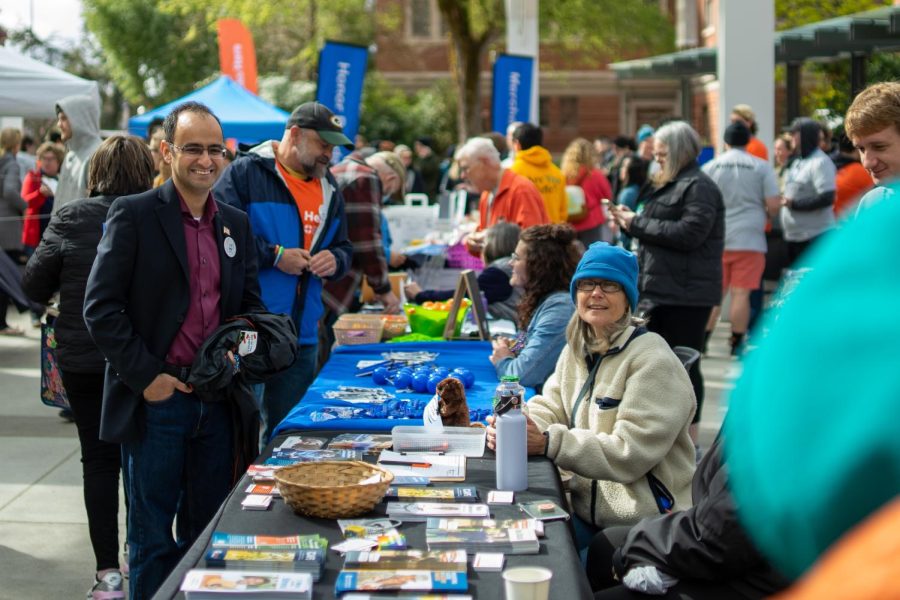
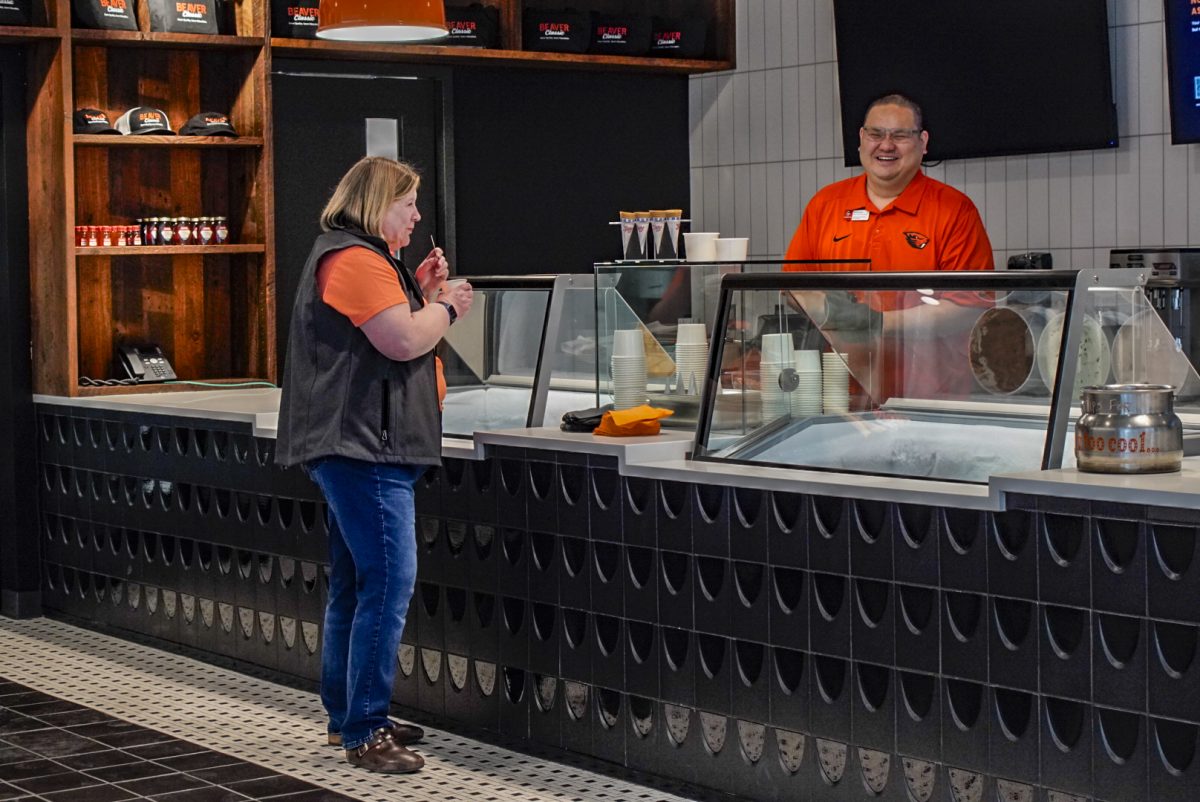
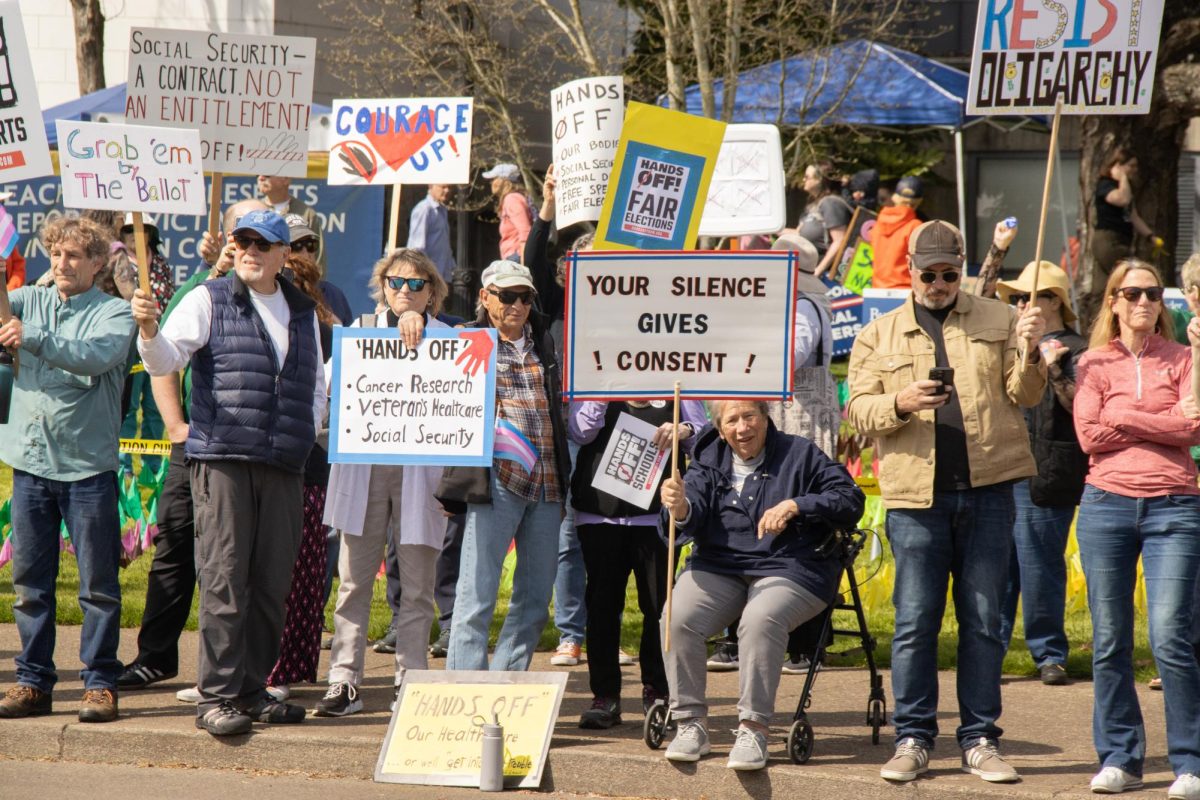







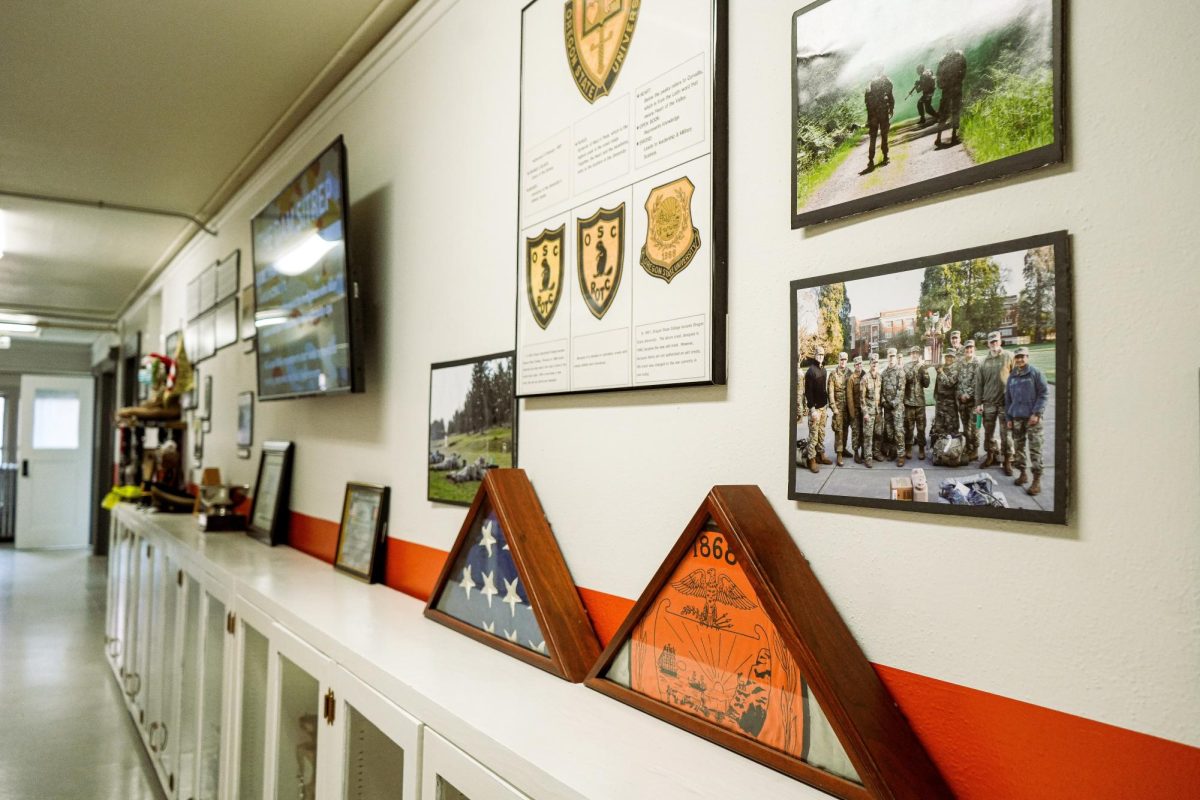
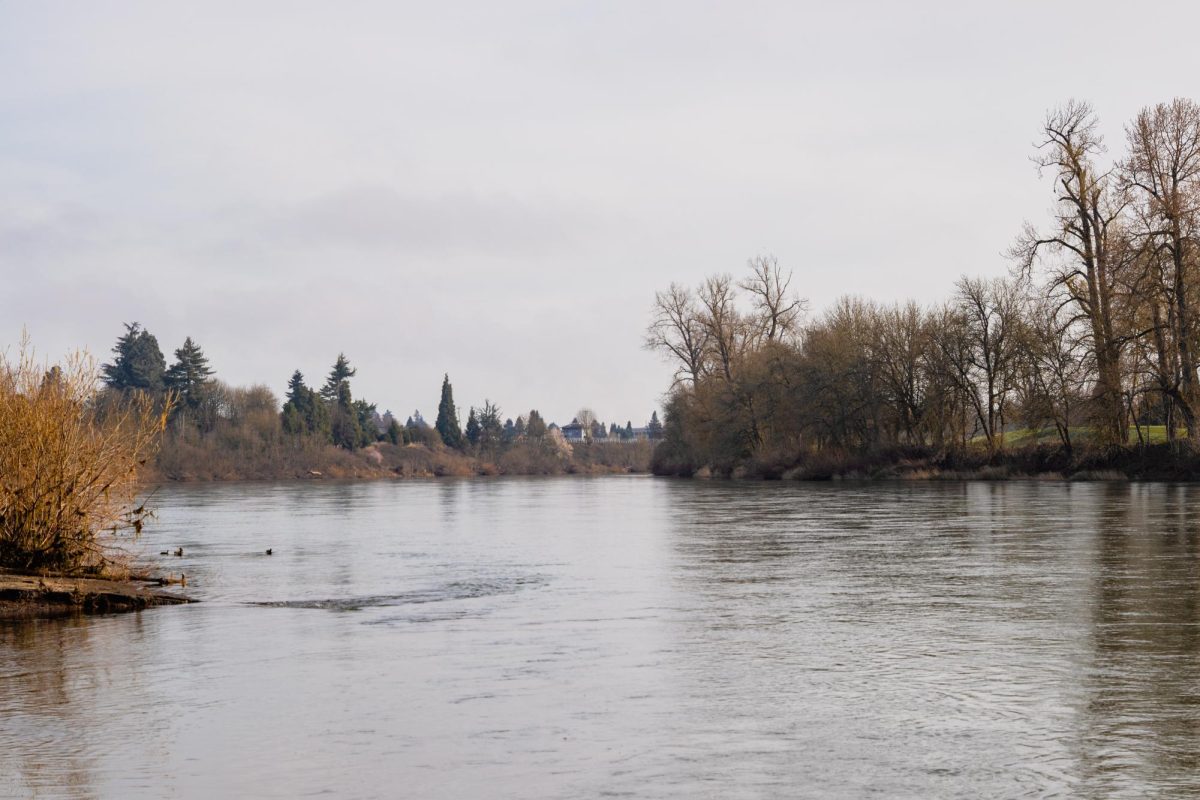

































































![Newspaper clipping from February 25, 1970 in the Daily Barometer showing an article written by Bob Allen, past Barometer Editor. This article was written to spotlight both the student body’s lack of participation with student government at the time in conjunction with their class representatives response. [It’s important to note ASOSU was not structured identically to today’s standards, likely having a president on behalf of each class work together as one entity as opposed to one president representing all classes.]](https://dailybaro.orangemedianetwork.com/wp-content/uploads/2025/03/Screenshot-2025-03-12-1.00.42-PM-e1741811160853.png)























